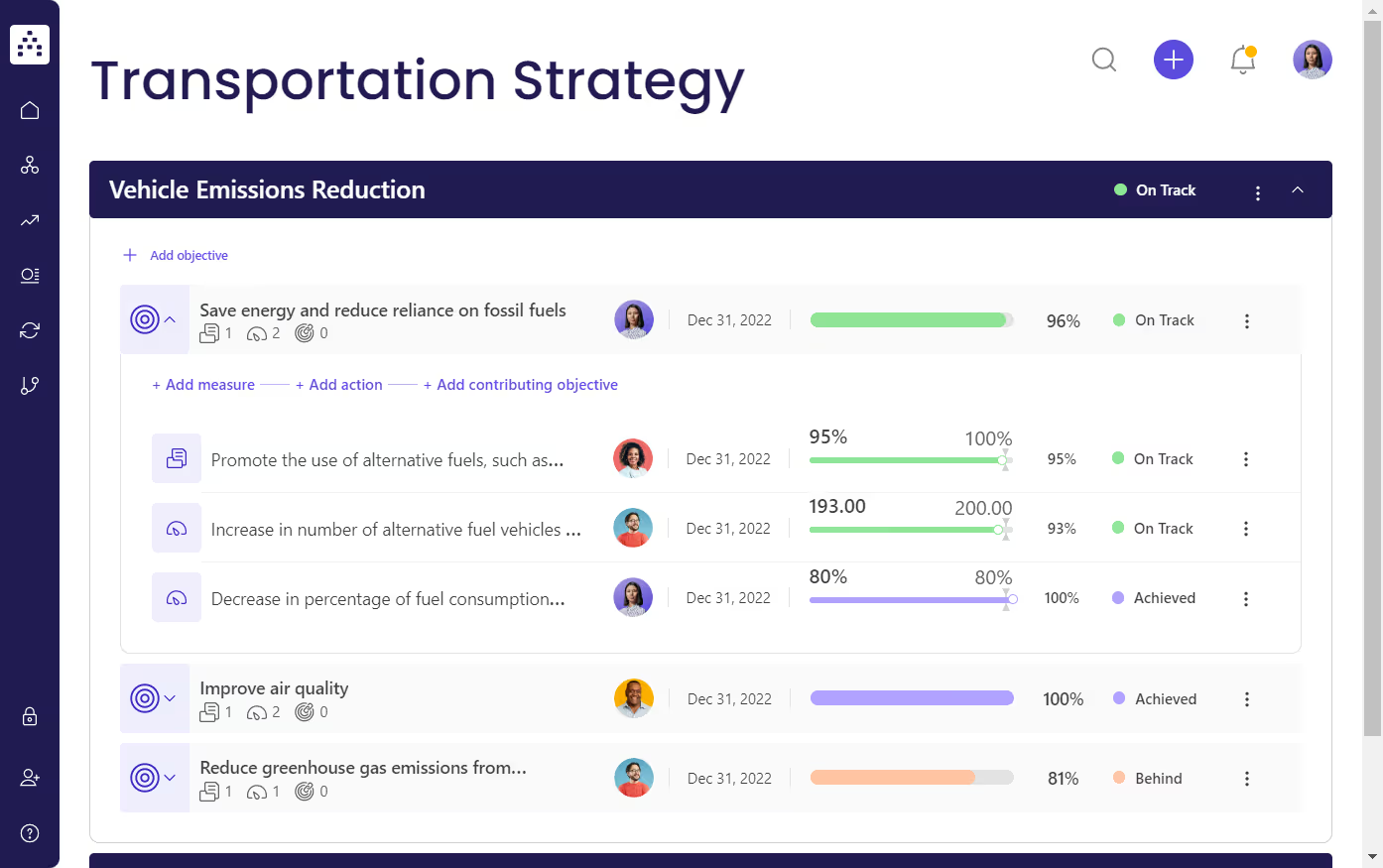What is a Transportation Strategy?
A Transportation Strategy outlines how an organization will address transportation-related issues and goals. It may include actions to improve the efficiency, sustainability, accessibility, and cost-effectiveness of transportation options within the organization or community. A Transportation Strategy can help organizations and communities identify and prioritize their transportation needs and goals, and develop a plan to achieve them.
What's included in this Transportation Strategy Template?
- 3x Focus Areas
- 9x Objectives
- 9x Projects
- 18x KPIs
Who is this Transportation Strategy Template for?
This Transportation Strategy Template is for leaders and teams from organizations who are looking to develop a plan to address transportation-related issues and goals. It may be particularly useful for organizations that are looking to improve the efficiency, sustainability, accessibility, and cost-effectiveness of their transportation options.
How is this Transportation Strategy Template relevant to your organization?
If your organization is looking to address transportation-related issues and goals, this template can help you develop a plan to achieve them. It provides a structure for identifying and prioritizing your transportation needs and goals, and developing a plan to address them. By using this template, you can ensure that your transportation strategy is well-organized, comprehensive, and actionable, helping your organization make progress towards its transportation-related objectives.
1. Define clear examples of your focus areas
A focus area is a particular viewpoint that groups certain requirements set out by an organization. A recommendation from the Cascade team would be to create 4-5 key focus area which you feel are most important to address when creating your Transportation Strategy. The next step would be to ask yourself: Why is this focus area important to me? What is the benefit of focusing on this viewpoint from a customer's perspective? And, of course, What is the monetary benefit of investing in such a focus area? This process is useful in identifying the key area which needs prioritization which in turn can become focus areas of the strategy.
For example, the focus areas in this Transportation Strategy Template are: Public Transportation; Walking and Bicycling Infrastructure; and Vehicle Emissions Reduction.
2. Think about the objectives that could fall under that focus area
A strategic objective usually has to be specific and measurable to cause enough impact and effectively explain what you want to achieve.
An example objective that could fall under the focus area of Public Transportation could be: Increase public transportation usage.
3. Set yourself measurable targets (KPIs) to tackle the objective
A KPI is a key performance indicator that is measurable and evaluates the success rate of an organization in relation to the task at hand. KPIs can be very industry-specific or broad and applicable across multiple industries.
An example of a KPI in this Transportation Strategy Template associated to the objective Increase public transportation usage could be: Increase in number of public transportation riders per month from 50,000 to 75,000.
4. Implement related projects to achieve the set KPIs
Projects are ways in which the objective can be achieved, but more so, closely tie in with ways in which organizations can make sure they are working towards their KPIs.
A project example for the objective Increase public transportation usage could be: Expand bus and train routes, improve schedule reliability.
5. Utilize Cascade Strategy Execution Platform to see faster results from your strategy
Make sure your strategy is front and center with Cascade. You can plan, execute, measure and adapt your strategy in one easy-to-use platform and make sure your strategic plan is connected to on-the-ground execution.
Use this Transportation Strategy Template and launch your strategy in Cascade; it's $0 forever.


